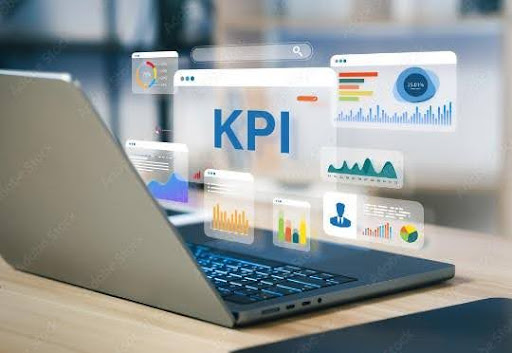Unlocking Financial Success: Essential Accounting KPIs for Business Growth

Contents
Accounting KPIs You Should Set and Track
Measuring and evaluating the state of a business or organization is a crucial aspect of efficient business management. In these digital data-driven days, the need to organize your business using the right tools has assumed even greater importance. One of the most essential areas to keep an eye on in your organization is the accounting department or section. This is because improper management of finances can liquidate a business faster than many other factors. This is where the term accounting KPI comes in. So what does KPI stand for in accounting?
If you are a newbie in the field, you may have pondered about the above and other similar questions: How is KPI calculated in accounting? How do you create a KPI for accounting staff? This post elucidates more on areas like what KPI are in accounting, sample KPI for accounting departments or accounting firm KPI examples, how to set KPI for accounting staff and more.
 What is an Accounting KPI?
What is an Accounting KPI?
An accounting KPI is simply a metric used to track, measure, and analyze the financial health of an organization. Key performance indicators accounting professionals work with are grouped under a variety of categories, including profitability, solvency, liquidity, valuation and efficiency.
By understanding these key performance indicators for accounting staff, you’ll be in a better position to know how your company is performing from a financial perspective. You can then use your accounting performance indicators knowledge to determine how to set KPI for accounting staff, as well as adjust the objectives of your department or team in order to positively impact critical strategic organizational goals.
Key Performance Indicators Accounting Practitioners Must Know
Several accounting KPI metrics are available out there to help firms achieve their business objectives and goals. The accounting KPI list below includes some of the most important key performance indicators accounting staff and other key stakeholders within an organization need to understand.
Working Capital
Working capital measures the available operating liquidity of a business, which it can use in funding its daily operations.
Working Capital = Current Assets - Current Liabilities
Gross Profit Margin
Gross profit margin is a profitability ratio used to calculate the percentage revenue that remains after subtracting the cost of goods sold. The cost of goods sold includes only the direct cost of production and excludes operating expenses, interest, or taxes. In other words, gross profit margin is an accounting KPI that specifically measures the profitability of a product or item line and does not account for overheads.
Gross Profit Margin = (Revenue - Cost of Sales)/Revenue x 100
Net Profit Margin
Like gross profit margin, net profit margin is also one of the key performance indicators accounting experts use to measure profitability. It calculates the percentage revenue and other income that remains after subtracting all costs incurred by a business. Among these business costs include operating expenses, costs of goods sold, interest, and taxes. The difference between net profit margin and gross profit margin as measures of profitability is that the former takes into account both the cost of goods sold and all other related expenses, unlike the latter.
Net Profit Margin = Net Profit/Revenue x 100
Quick Ratio
Also known as the acid test ratio, the quick ratio is a liquidity ratio that is used to measure the ability of a business to take care of its short-term obligations. This accounting KPI uses only highly liquid current assets (for example cash, accounts receivables, and marketable securities) in its numerator. It is based on the assumption that some current assets (for example, inventory) cannot easily be converted into cash.
Quick Ratio = (Current Assets - Inventory)/Current Liabilities
Current Ratio
Current ratio is another liquidity ratio and accounting KPI that indicates the ability of a business to pay for its short-term obligations (due within one year) with its current assets and liabilities.
Current Ratio = Current Assets/Current Liabilities
Leverage
Financial leverage or equity multiplier is the use of debt to purchase assets. The multiplier will be equal to 1 if all the assets are financed by equity. As debt increases, however, the multiplier also increases from 1, indicating the debt’s leverage impact, and consequently, the increasing risk of the business.
Leverage = Total Assets/Total Equity
Total Asset Turnover
This is also one of the key performance indicators accounting operators refer to as an efficiency ratio. It facilitates the measurement of the degree of efficiency with which a firm generates revenue with its assets. The higher the turnover ratio, the better the company is performing.
Total Asset Turnover = Revenue/(Beginning Total Assets + Ending Total Assets /2)
Inventory Turnover
Inventory turnover is also an efficiency ratio used to measure the number of times per accounting period that a business sold all its inventory. As an accounting KPI, inventory turnover provides insight into whether a business has excess inventory relative to its sales levels.
Inventory Turnover = Cost of Sales/(Beginning Inventory + Ending Inventory/2)
Debt-to-Equity Ratio
The debt-to-equity ratio is a solvency ratio used to calculate how much a business’s finances come through equity, compared to debt. It is an accounting KPI that provides information about the solvency state of a business by indicating the ability of shareholder equity to cover all debt in case of a downturn in the business.
Debt to Equity Ratio = Total Debt/Total Equity
Return on Equity
Return on equity (ROE), is yet another one of those key performance indicators accounting employees categorize a profitability ratio. ROE helps to determine how well a company can utilize equity investments to earn profit for investors. It is calculated by dividing net profit by shareholders’ equity.
ROE = Net Profit/(Beginning Equity + Ending Equity)/2
Return on Assets
Also a profitability ratio, return on assets (ROA) is similar to return on equity but is a ratio of the net profit and average assets of a business. This accounting KPI sheds light on how well a firm is managing its available resources and assets to net higher profits.
ROA = Net Profit/(Beginning Total Assets + Ending Total Assets)/2
Seasonality
Seasonality is a KPI finance accounting players use to determine how any particular period of the year is impacting a company’s finances and outcomes. It is particularly useful for those in industries affected by high and low seasons because it helps them to sort out confounding variables to determine the actual financial state of their company, especially by comparing old and new data for similar months, quarters, etc. Some techniques for calculating include moving averages and the Holt-Winters method.
Operating Cash Flow
Operating cash flow measures how much cash is available to the business for its daily operations. It can be positive or negative. A positive scenario means that cash is available to grow operations while a negative outcome implies a need for additional financing to maintain current operations. The operating cash flow is usually found on a company’s cash flow statement and can be calculated through any of the following two methods:
- The direct method: uses only the cash transactions (cash spent and cash received) to compute the cash flow statement.
- The indirect method: uses net income as a base and adds non-cash expenses such as depreciation; deducts non-cash incomes such as profit from the sale of scraps, and net adjustments between current assets.
How to Set KPI for Accounting Staff

When you and your staff are setting key performance indicators for the accounting department, it is necessary to incorporate SMART (specific, measurable, attainable, relevant, and time-bound) objectives. Each of these words is pretty much self-explanatory and paying attention to them will help in the achievement of organizational objectives and goals. For example, measurable ensuring that the KPI can be precisely calculated, estimated or measured. Measuring your KPIs helps you determine if you are making progress or otherwise.
Making sure that employees understand and consent to all that is involved is important. This will help ensure they perform at their optimum. Rather than being unexplained instructions or orders to junior workers, your accounting KPIs should emphasize collaboration toward achieving shared goals. So be sure you clearly communicate why you are setting the KPIs, instead of focusing narrowly on just what accounting KPI metrics are.
Enhance Your KPI Tracking With Basil Software
Though the above are essential accounting KPI metrics, it’s important to note there’s no absolute good or bad when it comes to the key performance indicators accounting stakeholders should adopt. Metrics need to be compared to previous years or competitors in the industry to see whether your organization’s financial performance is improving or declining and how it’s performing relative to others. In today’s data-driven business environment, adequate setting and tracking of your accounting KPIs requires that you integrate the right accounting software programs into your business.
With Basil Project Management Software for Accountants and CPA Firms, your business is on its way to meeting its goals. Basil is a refreshingly simple all-in-one accounting tool that is efficient, affordable, and simple to use. Firms work with a vast amount of documents, including tax forms, financial statements, and legal documents. Basil accounting practice management software, among several other features, offers document storage, search, and retrieval features, making it easier to organize and access critical information. No matter the key performance indicators accounting officials adopt, the multi-purpose and secure Basil is the answer when it comes to streamlining accounting operations for increased productivity, reduced stress, improved accuracy, stronger CRM, and more.
Ready to boost your work with Basil? Sign up now and start your free 15-day trial